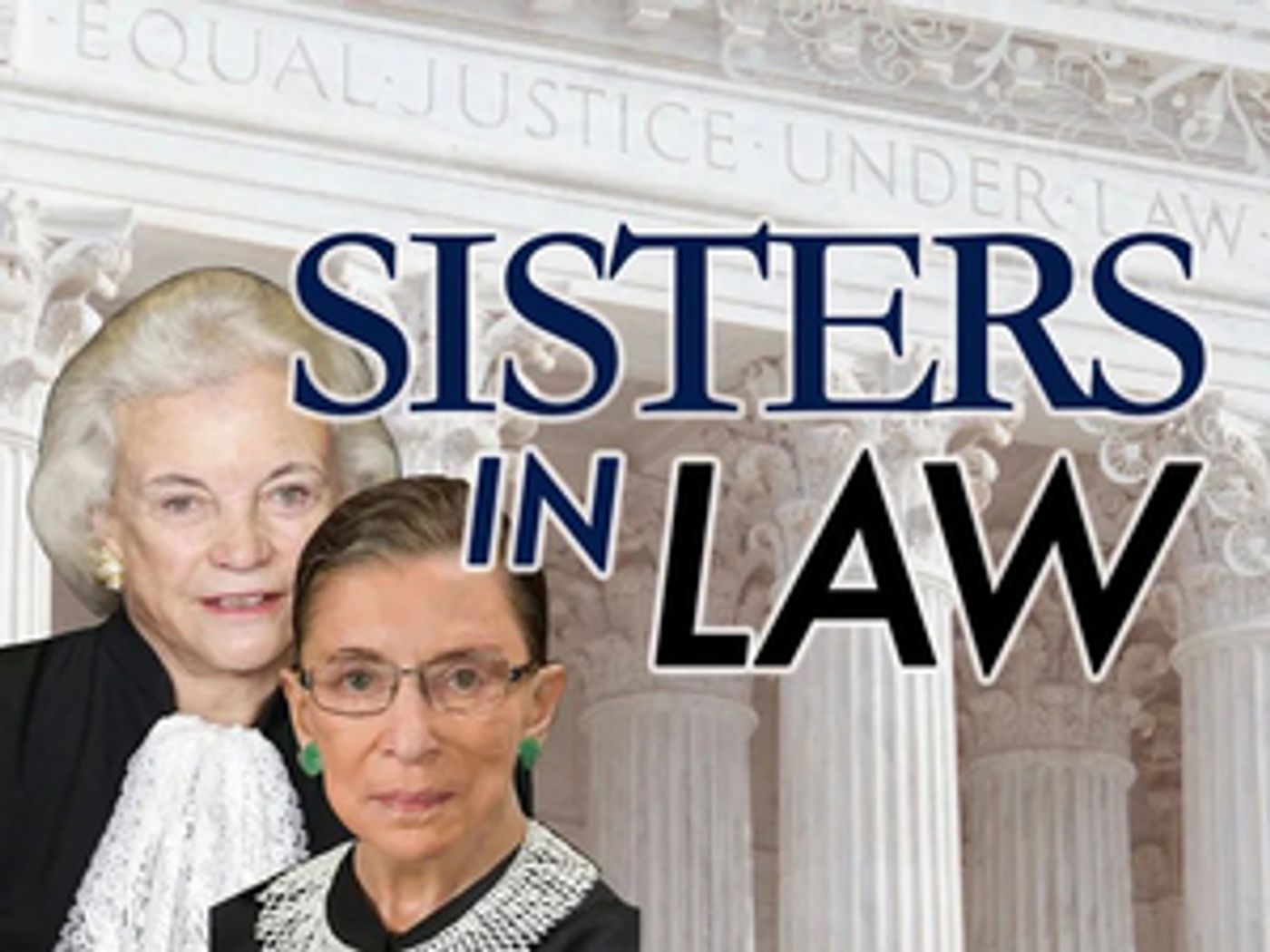Review: SISTERS IN LAW at Theatre Or
Sisters in Law runs through October 31, 2021.

History has its eyes on you - or at least according to Alexander Hamilton. American Political History has never been more important in today's society than in the moments we collectively take together. Relationships and bonds between our friends and neighbors, or perhaps lack there of, is highlighted in our daily news. Sometimes, it is essential to not look at what is happening, but instead look back at what happened. In his first work by playwright Jonathan Shapiro, this ideal takes shape in the form of Sisters in Law, the newest show for Theatre Or.
Sisters in Law takes historical precedent, following the lives of Sandra Day O'Conner and Ruth Bader Ginsburg during their time together on the US Supreme Court. Spanning a number of decades, the show zooms in on particular moments in their lives alongside significant court cases throughout that same timeline. It's not often I have the opportunity to review new works, so I relished at the opportunity to take in every aspect of this production, from content to creativity.
Under the helm of Director Amy Feinberg, the overall production kept me engaged and exhibits creative elements that really shine. Laura K. Love's Scenic Design, along with Props Master Donna Kanne set the stage nicely, delivering a real authenticity to the look of the show. Costume Designer Rachel Finley has also provided a wardrobe for both Ginsberg and O'Conner that allows the actors a chance to transform into their roles. There were additional original musical interlude elements during scene changes and other Sound Design elements provided by Max Silverman. Silverman's folk-like musical moments are well composed, though given the fact that there are frequent time jumps between scenes, a better choice for the production would have been to use sound bites of news broadcastings about significant court cases and other historical moments between the years presented as a way to guide the audience along the timeline.
In the cast of two, our players do a fine job of keeping you engaged for the 90-minute showing individually. Though, at times it was hard to feel a sense of connection between the two. As Sandra Day O'Conner, Sally Knudsen's performance feels dry and stiff which contributes to a lack of kinship between she and her scene partner. In a show about their friendship and time together on the Supreme Court bench, it was that sense of friendship I felt was missing. As Ruth Bader Ginsburg, A. Lee Massaro truly gives a leading role performance, though it could be argued the writing of the show sets up RBG as the main protagonist. Massaro really leaned into the material, using it to her advantage while also lending physicality to the role, aging RBG as time moved on from year to year.
My biggest critiques have to do with the writing of the show. The beginning of the show feels a bit choppy, moving between vignettes of Ginsburg and O'Conner before they eventually meet when Ginsburg joins the bench, at which point the show finally settles into a rhythm. There is also a significant misstep in an historical example Ginsburg relays to O'Conner - a story about how women started to get hired to play in more professional orchestras once the idea of "blind auditions" was instituted across the industry. The problem first is that Ginsburg later in the show goes on to criticize O'Conner's opinion in the Harris v. Forklift Systems Inc. court case, insisting that although it gave women the right to sue their employers, by Ginsburg's standards it only allowed women to bring forth losing cases. Going back to her orchestral example, it is important to note that the reason blind auditions started is because two black men named Earl Madison and J. Arthur Davis accused the New York Philharmonic of racial discrimination. The two men would go on to lose their appeal with the city's Commission on Human Rights, though they did still recommend to the NYP that they make changes to their audition practices, leading to blind auditions. This would lead to more women being hired in orchestras, with involvement jumping from 6% to roughly one-third of orchestras. However, orchestras still remain to this day one of the least racially diverse institutions, with black musicians accounting for less than 2% of players. So although, Ruth's example about blind auditions did lead to more women in orchestras, it did not lead to more musicians of color being hired which is why blind auditions were brought around in the first place.
The other main issue I have with the writing is the ending of the play. The show ends at a celebration for O'Conner in 2015 with Ginsburg and O'Conner prophesying the future. Ginsburg lays it on thick, the idea that Hillary Clinton will win the Presidential Election of 2016, leading to the first female President and that it will be her great honor to step down from that bench at that time to give Clinton the privilege of nominating another woman to take her place. Noting the obvious, it is clear this was written after Clinton infamously did not win the election. To not take the show all the way through to Ginsburg's death and instead end with this moment was, in word, masturbatory, echoed strongly by the various reactions of the audience.
In general, I found the piece compelling. It certainly never lost my interest, though, like many diamonds in the rough, still has opportunity for refinement.
How To Get Tickets
Sisters in Law runs through October 31, 2021. For tickets, visit https://theatreor.ticketspice.com/sisters-in-law.
Reader Reviews

Videos

